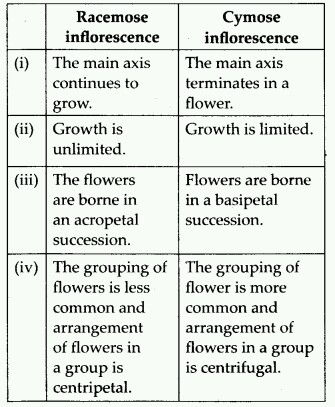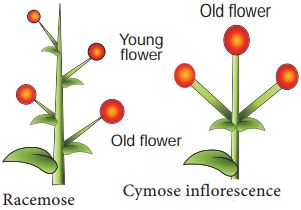Inflorescence
The inflorescence is the arrangement of flowers along the floral axis. A flower is a modified shoot in which the apical meristem of the shoot transforms into the floral meristem. The axis becomes condensed as the internodes do not lengthen. Instead of leaves, the apex produces several types of floral appendages at successive nodes. The transformation of a shoot tip into bloom is always solitary. Two basic forms of inflorescences are described based on whether the apex develops into a flower or continues to grow:
1. Racemose. The primary axis of racemose inflorescences continues to grow, but the flowers are carried laterally in acropetal succession. Younger flowers are present at the tip while older flowers are arranged at the base of this inflorescence. Example: Mustard, Snapdragon, Gulmohar, Wheat, Barley, Parsley.
2. Cymose: The primary axis of a cymose inflorescence terminates in a flower, limiting its expansion.The flowers are borne in a basipetal order. Younger flowers are present at the base of the inflorescence, while older flowers are present at the top. The cymose inflorescence is present in plants like Solanum nigrum, Drosera, Begonia, Ranunculus, Jasmine, Calotropis, etc.



 ACME SMART PUBLICATION
ACME SMART PUBLICATION
